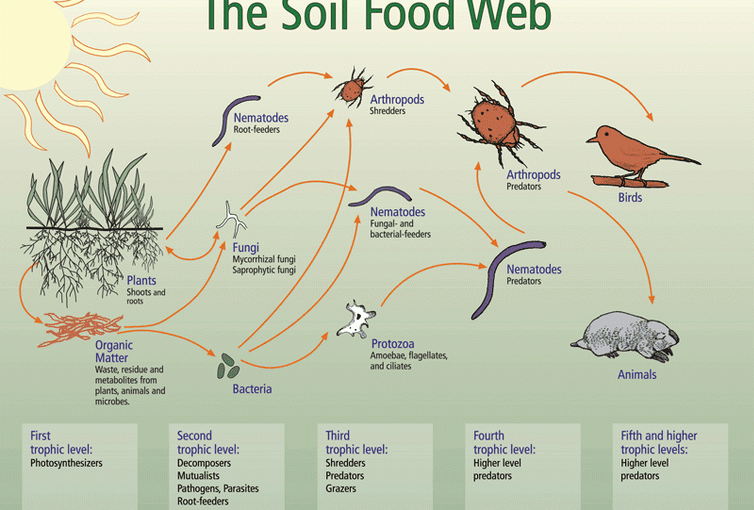Do you eat a protein-rich diet? Do you take any protein supplements because you are trying to build big muscles in the gym?
Have you ever met or known someone with a protein deficiency? Someone who truly had a protein deficiency? That’s because the only people who ever suffer from insufficient protein have to live in a part of the world where food is scarce or non-existent. In places like Sub-Saharan Africa, Southeast Asia, and Central America. It is usually prevalent in children and newborns. During times of hunger induced by natural calamities — such as droughts or floods — or political upheaval, these countries often have a limited supply or absence of food.
Lack of protein in the diet causes Kwashiorkor. Protein is found in every cell in your body. Protein is required in your diet for your body to repair and replace cells. This is how a healthy human body regenerates cells regularly. Protein is particularly necessary for growth in children and during pregnancy. When the body is deficient in protein, growth and regular bodily functions slow down, and kwashiorkor develops. (1) (Kwashiorkor, n.d.)
Today, in the United States we are living in what is called a postindustrial world/society. A postindustrial society is marked by a transition from a manufacturing-based economy to a service-based economy, a transition that is also connected with subsequent societal restructuring. Postindustrialization is the next evolutionary step from an industrialized society and is most evident in countries and regions that were among the first to experience the Industrial Revolution, such as the United States, western Europe, and Japan. (2) (Robinson, 2013)
To reiterate, in the United States, we live in a postindustrial world/society. And as such we have no want for even the most basic of nutritional needs. And the reality is that most of us in the United States have access to and consume too much good stuff, food, and otherwise.
As such, I will demonstrate below why our health is suffering so badly in this world of plenty we call home. The short answer is…Too much protein. When we consume protein above and beyond our body’s physiological needs, our body’s innate mechanisms become the machinery that forms the basis of our damnation. Our early demise.
The following is a simplified explanation of what happens inside the human body when we consume protein above its immediate needs at any moment in time.
Deamination is the process of removing an amino group from an amino acid. This process is crucial because it allows the amino acid to be converted into a form that can be used for energy production or other metabolic processes. It is
It’s important to note that while gluconeogenesis is a critical metabolic pathway, the body generally prefers to use carbohydrates and fats as the primary sources of energy, resorting to protein catabolism as a significant energy source only under conditions of dietary deficiency or metabolic stress.
When the body uses amino acids for energy, deamination occurs in the liver, converting the nitrogen-containing amino group into ammonia, which is then converted into urea and excreted by the kidneys. The remaining part of the amino acid, which is now without the amino group, enters various metabolic pathways, including the Krebs cycle, for energy production or the synthesis of glucose or fatty acids.
Which bodily process happens first, proteolysis or deamination?
The process by which the body breaks down protein into individual amino acids is called “proteolysis.” This process involves the breakdown of the peptide bonds that link amino acids together in proteins. Proteolysis is carried out by enzymes known as proteases and peptidases. It occurs in various parts of the body, including the stomach and small intestine, where dietary proteins are digested, as well as within cells, where proteins are continually broken down and recycled. Proteolysis is a key step in protein metabolism, allowing the body to utilize the amino acids for various functions, including new protein synthesis, energy production, and other metabolic processes.
Proteolysis occurs before deamination in the sequence of protein metabolism. Here’s the typical order:
- Proteolysis: This is the first step, where proteins are broken down into individual amino acids. Proteolysis happens through the action of digestive enzymes in the gastrointestinal tract for dietary proteins or by cellular enzymes for endogenous proteins.
- Deamination: Once amino acids are released from proteins, they are used for various purposes. Deamination may occur if an amino acid is to be used for energy or converted into other compounds. This is the process where the amino group is removed, typically in the liver.
Proteolysis is the initial process that releases amino acids from proteins, and deamination is a subsequent step that further modifies amino acids for various metabolic needs.
When proteins are metabolized, they are broken down into their constituent amino acids. A key component of these amino acids is nitrogen. During the catabolism (breakdown) of amino acids, the amino group (NH2) is removed in a process called deamination. This process occurs mainly in the liver.
Nitrogenous wastes are a byproduct of the metabolism of proteins and nucleic acids. The digestive process breaks down proteins into amino acids, which then enter the body’s metabolic pathways, producing nitrogenous wastes.
Removing the amino group results in the formation of ammonia (NH3), which is toxic. The liver then converts this ammonia into less toxic substances, mainly urea in mammals, including humans. This conversion is part of the urea cycle. The urea is then transported to the kidneys, where it is filtered out of the blood and excreted from the body in urine.
To reiterate, nitrogenous wastes, particularly ammonia and urea, which are byproducts of amino acid deamination, are harmful to the brain, soft tissues, and the cardiovascular system due to their toxic effects, especially in high concentrations. Here’s why:
- Ammonia Toxicity: Ammonia, a direct byproduct of deamination, is highly toxic, especially to the brain and nervous system. It disrupts normal cellular and neurological functions.
- Urea and Osmotic Imbalance: While urea, which is less toxic than ammonia, is a safer way for the body to transport and excrete nitrogen, high levels of urea cause osmotic imbalances. This leads to dehydration and stress on cells, including those in the cardiovascular system.
- Metabolic Acidosis: Accumulation of nitrogenous wastes leads to metabolic acidosis, a condition where the blood becomes too acidic. This impairs cardiovascular function and damages heart tissue.
- Inflammation and Oxidative Stress: Excess nitrogenous waste induces inflammation and oxidative stress, contributing to tissue damage and atherosclerosis (hardening of the arteries).
The body normally converts ammonia to urea in the liver (via the urea cycle) and excretes it through the kidneys to avoid these harmful effects. However, suppose this system is overwhelmed(over-consumption) or impaired (as in liver or kidney disease). In that case, nitrogenous waste levels become dangerously high, leading to toxicity and damage beyond the body’s ability to repair.
What kind of diets result in higher levels of nitrogenous waste?
Diets that result in higher levels of nitrogenous waste are typically those rich in proteins and nucleic acids. This is because the metabolism of these macronutrients involves the removal and excretion of nitrogen:
- High-Protein Foods: Foods with high protein content are the primary contributors to increased nitrogenous waste. This includes:
- Meat (beef, pork, lamb, poultry)
- Fish and seafood
- Eggs
- Dairy products (milk, cheese, yogurt)
- Legumes (beans, lentils, soy products)
- Nuts and seeds
- Foods Rich in Nucleic Acids: Nucleic acids (DNA and RNA) are also metabolized into nitrogenous wastes, though to a lesser extent than proteins. Foods that are particularly high in nucleic acids include:
- Organ meats (liver, kidney, heart)
- Seafood (especially sardines, mackerel, and shellfish)
- Yeast and yeast extracts
To reiterate, when these foods are digested, the body breaks down their proteins into amino acids and their nucleic acids into nucleotides. The nitrogen-containing parts of these molecules are then converted primarily into urea, which is excreted by the kidneys.
When consuming a diet high in protein, it is important to support the kidneys in effectively processing and eliminating these nitrogenous wastes. Excessive protein intake over an extended period strains the kidneys, particularly in individuals with preexisting kidney conditions.
Here is what one should expect if one consumes a high-protein diet that results in excess proteolysis and deamination.
- Atherosclerosis: There is evidence that certain metabolic by-products of protein contribute to atherosclerosis and the buildup of plaques in the arteries.
- Calcifications, Vascular and Otherwise: In the context of kidney disease, conditions like hyperphosphatemia (high phosphate levels) occur due to excessive protein intake. This leads to vascular and other systemic calcifications and is a significant risk factor for cardiovascular disease.
- Hypertension: High protein intake, especially from animal sources, increases blood pressure, a major risk factor for CVD. This complex relationship involves various factors, including changes in kidney function and fluid balance due to the handling of the by-products of protein metabolism.
- Kidney Stress and Damage: The kidneys filter waste products, including those produced during deamination. Excessive deamination overburdens the kidneys, leading to or exacerbating kidney diseases, including chronic kidney disease and azotemia.
- Increased Urea and Uremia: As a result of excessive deamination, urea levels in the blood increase, leading to a condition called uremia, where the kidneys cannot filter it efficiently. Uremia has been associated with an increased risk of cardiovascular disease, as it contributes to factors like endothelial dysfunction, arterial stiffness, and inflammation.
- Inflammation: Chronic kidney disease and uremia lead to systemic inflammation, which is a known contributor to cardiovascular disease.
- Liver Disorders: Since the liver converts ammonia (a by-product of deamination) into urea, excessive deamination stresses the liver. In cases of liver dysfunction, ammonia may not be adequately converted, leading to hyperammonemia, which is toxic, especially to the brain.
- Metabolic Effects: Chronic consumption of excessive protein, especially animal protein, has various metabolic effects, such as increasing the risk of kidney stones, altering calcium balance, affecting bone health, and impacting kidney function, especially in individuals with pre-existing kidney disease.
- Metabolic Acidosis: Deamination leads to an accumulation of acidic compounds in the body. It disrupts the body’s acid-base balance, leading to metabolic acidosis. This condition causes fatigue, rapid breathing, confusion, and in severe cases, shock or death.
- Alterations in Gut Microbiota: High protein intake, particularly from animal sources, alters the composition and function of the gut microbiota. This has various implications for gut health and possibly systemic inflammation.
- Electrolyte Imbalances: The process of deamination and the subsequent handling of its by-products affects the balance of electrolytes in the body, potentially leading to imbalances that affect muscle and nerve function.
- Bone Health Issues: Excessive protein intake and deamination affect the body’s calcium balance, leading to bone loss and increased risk of osteoporosis.
At this point in time, I believe this is likely the most significant modifiable factor to our species overall mortality. Imagine if a pharmaceutical company offered a single pill that could prevent all of these 12 problems. Everyone would be clamoring for it, the individual that stumbled across this solution would be considered a savior of mankind.
There is a way to do this with a pill. If you still don’t see the solution, if it is not obvious, please don’t hesitate to ask me how.
- Kwashiorkor. (n.d.). S10.fit. https://www.s10.fit/blogs/disease/What-is-the-cause-for-Kwashiorkor/
-
Robinson, R. C. (2013, November 19). Postindustrial society | Urbanization, Automation, Globalization. Encyclopedia Britannica. https://www.britannica.com/money/topic/postindustrial-society
